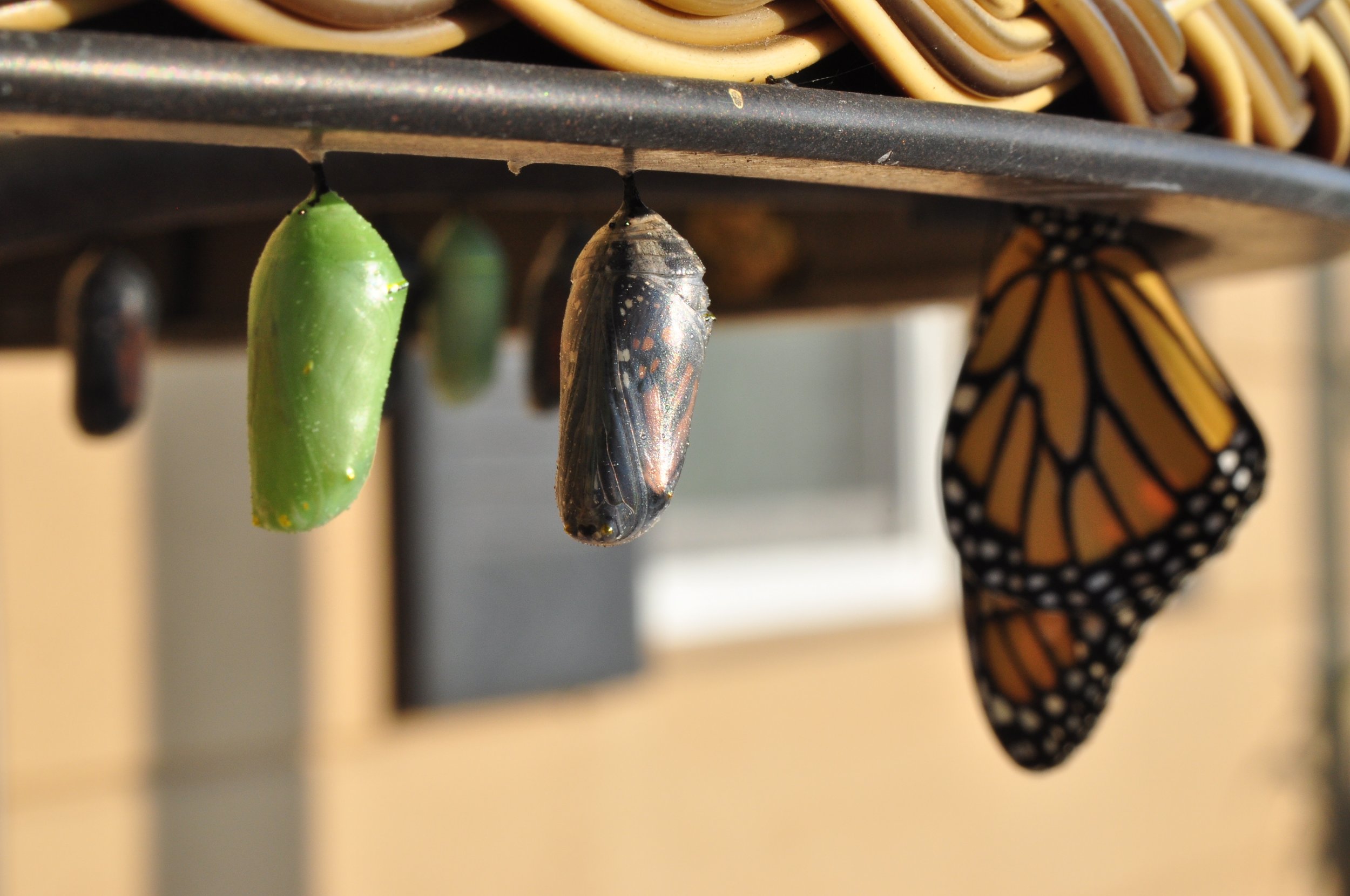Sue Monk Kidd: Cocoons
“Our deepest struggles are in effect our greatest spiritual and creative assets and the doors to whatever creativity we might possess.” David Whyte, p. 62, The Heart Aroused, Poetry and the Preservation of the Soul in Corporate America, Crown Business 2002. .
suzanne d williams unsplash
In When the Heart Waits, Spiritual Direction for Life’s Sacred Questions, speaker and writer, Sue Monk Kidd, shares her spiritual journey at mid-life. She compares this journey to being in a cocoon of darkness and finally emerging as a butterfly. Even though this image is more often one of Easter, it can also be an image of our journey through Advent. In the cocoon, Kidd shares with us her experience of the false selves that keep us from being the person God created us to be, the defenses we use for survival that like an addiction eventually harm us. She reminds us to embrace them, kiss them, thank them for caring for us, but now it is time to see what is beneath the thick skin cover-up.
Kidd describes the word crisis that in the Greek means separation, to leave the dead. Crisis is a holy summons to cross a threshold. Our response to crisis can be fighting it by looking for comfort or justice or by waiting and using the time to be soul-making (the narrow gate). Instead of trying to ride the crisis she writes about attempting to understand and identify the feelings that come up in the crisis like sorting tangled ribbons and then expressing these feelings especially through symbols such as a cocoon, which may come in writing or sharing our story or in dreams.
Those who are a part of a sacramental tradition where everyday symbols such as water, bread and wine and oil are used as an outward symbol of an inner grace can identify with the use of earthly symbols in our spiritual lives.
Kidd talks about the difficulty of letting go by comparing it to the caterpillar’s resistance to change called “diapause.” We fear leaving this former life as if it is “all we have.” I personally experienced this “nothing left” as I heard a call to transition from my medical career.
Letting go also happens at retirement and when we find an empty nest after our children leave or after we experience the death of a loved one. Kidd quotes from Rilke that as we resist, we should try loving the questions in our heart like locked rooms or books written in a very foreign language. We should live the questions in the darkness, and the answers will later come as we see resurrection. Jesus, of course, was the master of leading people to growth with more questions.
As Kidd moved from the cocoon of darkness to light, she began eastering or experiencing resurrection. She experienced delight in life, found a feminine side of God, learned a love of creation, and made a connection with her body. She learned that when she showed disrespect for her body, she also showed disrespect for the earth.
She also had a desire to live in the present, the now here instead of the nowhere when we live in the past or future, where we prepare to live instead of living. When we live in the present, time becomes not a straight line but a deep dot.
Kidd describes three stages of her contemplative awareness, first, hearing the words but not the music, then hearing the words and the music, and finally being the music.
Our orchestra seats for the Arkansas symphony in Little Rock are almost on the front row. I wonder if these seats may be an unconscious icon to be the music. This may be an attempt to become the music as we live in the present listening to the music, and as Kidd also did, little by little, learning about our authentic self, the true self that musical piece God has made.
Joanna joannaseibert.com


